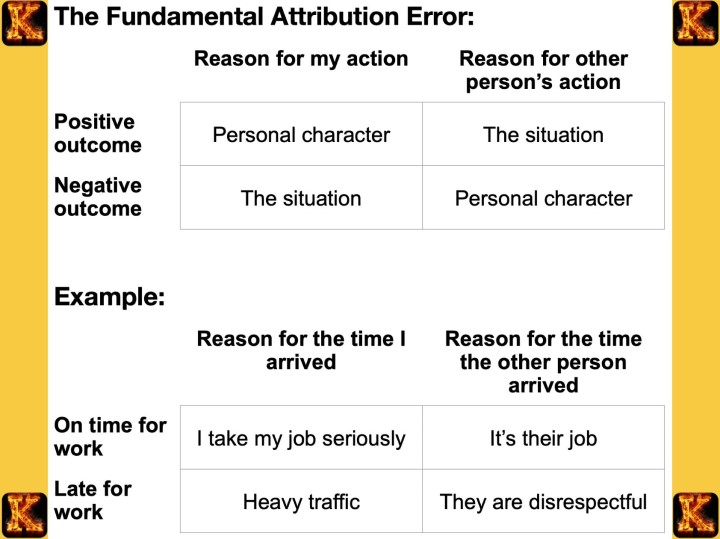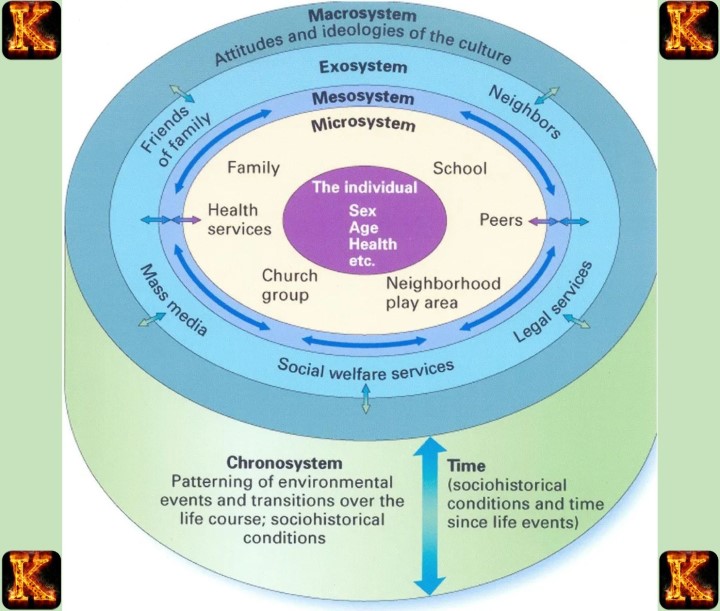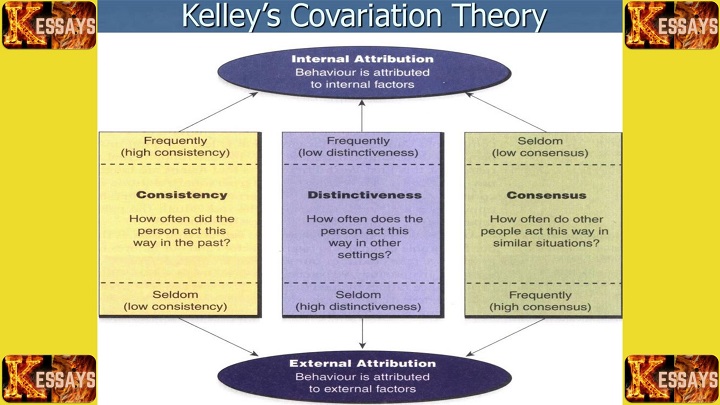Introduction
Jones and Davis’s Correspondent Inference Theory is a foundational concept in social psychology that explains how people make judgments about others based on observed behavior. When we watch someone act, we naturally try to understand what their behavior says about their personality, intentions, and motives. This theory helps students, researchers, and practitioners understand how those judgments are formed. Because behavior can have many possible causes, the theory provides a structured way of determining when observers are likely to conclude that an action reflects a person’s internal traits rather than external pressures.
This article explains the theory clearly and step by step. It also defines key terms, provides practical examples, and shows how the theory connects to broader attribution processes.
Core Idea of Correspondent Inference Theory
Correspondent Inference Theory, developed by Edward E. Jones and Keith E. Davis in 1965, explains how people interpret others’ behavior to make judgments about their personality traits. The theory introduces the concept of a correspondent inference, which occurs when an observer concludes that a particular action reflects an enduring characteristic of the person performing it. In essence, the theory asks whether a behavior reveals who someone truly is or whether it is largely shaped by situational factors.
According to CIT, certain types of behavior are more likely to trigger trait inferences. These include actions that are voluntary, socially undesirable, uncommon, result in unique outcomes, or directly affect the observer. When observers notice these behaviors, they are more likely to interpret them as intentional and reflective of the actor’s stable traits. This framework helps explain how people form perceptions of personality in everyday life, from routine interactions to significant decisions, without immediately assuming external circumstances are the primary cause.
Read Also: Transference and Countertransference in Therapy
Key Determinants of Trait Inference
Correspondent Inference Theory explains that observers use certain cues to determine whether a person’s behavior reflects their internal traits. People pay attention to specific characteristics of behavior that make it more likely to reveal personal disposition. These key determinants help us understand why some actions lead to stronger personality judgments than others.
Freely Chosen Behavior
Observers are more likely to infer internal traits when a behavior appears voluntary. When someone acts out of free choice, it is assumed that their action reflects personal characteristics rather than external pressures. For example, if a person chooses to work in a dangerous environment, others may infer bravery or a willingness to take risks. This matters because when behavior is constrained or forced, it is less indicative of underlying traits, making voluntary actions particularly revealing.
Socially Undesirable Behavior
Actions that violate social norms are especially informative because few people would intentionally engage in them. For instance, interrupting someone during a meeting may lead observers to infer rudeness or impatience. Socially undesirable behaviors are important for trait inference because most people avoid such actions, so choosing them signals a stronger connection to personality rather than situational factors.
Non-Normative Behavior
Unusual or uncommon behaviors provide more insight into a person’s traits than routine actions. If someone turns down a highly prestigious job offer, observers may infer that the individual values independence, creativity, or personal fulfillment over status or financial gain. Non-normative behaviors are significant because ordinary actions can occur for many reasons, but unusual actions are more likely to reflect deliberate choices and internal dispositions.
Noncommon Effects
Observers also focus on the distinctive outcomes of a behavior to infer motives. For example, choosing a low-paying nonprofit job over multiple high-paying opportunities signals a deliberate preference for purpose over profit. Noncommon effects are valuable because unique consequences make it easier to connect behavior with personality rather than external constraints, highlighting intentional decision-making.
Personal or Hedonic Relevance
When a behavior directly affects the observer, trait inferences become stronger. For example, if someone criticizes you personally rather than addressing a group, you are more likely to interpret the action as hostile. Personal relevance is important because it draws attention and increases the likelihood that observers perceive the behavior as intentional and diagnostic of character, emphasizing the observer’s perspective in interpreting traits.

Attribution Theory and Its Connection to Correspondent Inference Theory
Building on their work with Correspondent Inference Theory, Edward Jones and Keith Davis, together with Harold Gerard in 1967, developed Attribution Theory. This broader framework helps explain how people determine the causes of behavior and events. While Correspondent Inference Theory focuses specifically on when observers infer stable personality traits from particular actions, Attribution Theory addresses causal reasoning in general, including why events occur and why individuals behave in specific ways. Understanding both theories together provides a comprehensive view of how people interpret actions in everyday life.
Cause Assignment
A central idea in Attribution Theory is that people naturally attempt to assign causes to behaviors and events. Observers ask why a particular action occurred and consider multiple possible explanations. For example, if a colleague misses a project deadline, one might wonder if the cause is carelessness, lack of skill, or external pressures such as an unusually heavy workload. This process of evaluating potential causes is fundamental to social perception and guides decision-making about how to respond to others.
Internal and External Causes
Attribution Theory distinguishes between internal and external causes. Internal causes refer to traits, motives, or intentions that originate within the person, while external causes involve situational factors such as environmental constraints, luck, or social pressures. This distinction helps observers evaluate whether a behavior reflects the individual’s character or the circumstances surrounding them. For instance, arriving late to a meeting could be interpreted as a sign of disorganization if viewed as internal, or as unavoidable if explained by external factors like traffic. Understanding this distinction is essential for accurate interpretation of behavior.
Cognitive Processes and Biases
Another key component of Attribution Theory is the influence of cognitive processes and biases on causal judgments. People rarely evaluate causes purely objectively. Mental shortcuts, prior expectations, and existing beliefs can shape how observers interpret behavior. For example, individuals may overemphasize internal traits, assuming a colleague who is late is lazy, without considering situational factors. Recognizing these biases helps explain why misattributions occur and why observers sometimes incorrectly link behavior to personality rather than context.
Correspondent Inference Theory as a Specialized Model
Within the broader framework of Attribution Theory, Correspondent Inference Theory functions as a focused subset. CIT identifies the conditions under which observers are most likely to infer internal traits from behavior. The theory highlights behaviors that are unusual, socially undesirable, or personally relevant as particularly diagnostic of stable personality traits. In essence, while Attribution Theory explains general causal reasoning, CIT explains why certain behaviors provide stronger evidence about who a person really is.
Implications for Social Perception
Connecting CIT to Attribution Theory enhances understanding of how people interpret behavior in real-world contexts. Observers weigh situational and dispositional explanations, paying close attention to behaviors that reveal meaningful information about personality. By considering both theories, social psychologists can better explain how individuals navigate the complexities of social interaction, distinguishing between actions that reflect internal traits and those influenced by external circumstances. This integrated approach offers a more nuanced perspective on human behavior and the judgments we make about others.
Read Also: Writing a PhD Thesis Defense Paper
The Role of Social Desirability
Socially Desirable Behaviors
Behaviors that are considered socially acceptable or praiseworthy often provide limited insight into a person’s true personality. Because most individuals naturally try to act in ways that are approved or admired by society, these actions tend to be less diagnostic of internal traits. For example, helping an elderly person cross the street is widely regarded as kind and considerate. However, this behavior does not strongly indicate a person’s underlying kindness because it is something most people would do in the same situation. In other words, socially desirable actions are common and expected, making it difficult to draw firm conclusions about the actor’s stable characteristics.
Socially Undesirable Behaviors
In contrast, behaviors that violate social norms or are generally considered negative are much more informative about a person’s character. Fewer people would voluntarily engage in actions that are socially unacceptable, so when someone does, it signals internal traits more clearly. For instance, a person who habitually gossips or spreads rumors at work may be seen as untrustworthy or inconsiderate. Because these actions are uncommon and often frowned upon, observers are more likely to interpret them as reflections of genuine personality rather than the result of situational pressures.
Implications for Trait Inference
According to Correspondent Inference Theory, socially undesirable behaviors are more diagnostic than socially desirable ones. Observers focus on these uncommon or norm-violating actions to make stronger inferences about an individual’s character. Since most people avoid negative behaviors, choosing to engage in them provides clearer evidence of internal dispositions. This principle highlights why not all behaviors are equally informative and explains why people often pay closer attention to actions that break social rules or challenge expectations when evaluating personality.

Practical Examples of CIT
Non-Normative Behavior
Observers are especially attentive to behaviors that are unusual or uncommon because these actions stand out from typical social patterns. When a person does something that deviates from expectations, it draws attention and signals that the behavior may reflect a genuine personal trait rather than situational influence. For example, if a student refuses to participate in a group project, others might infer traits such as independence, stubbornness, or discomfort with collaboration. The uncommon nature of the action highlights intentional choice, making it more diagnostic of the individual’s personality. In everyday life, non-normative behaviors are often the strongest cues people use to form judgments about character.
Socially Undesirable Behavior
Actions that break social rules or norms are particularly revealing because fewer people would voluntarily engage in them. Observers interpret these behaviors as indicators of internal traits since they are less likely to be the result of situational pressures. For example, a colleague who consistently spreads rumors at work may be perceived as lacking empathy or as someone who seeks conflict. Socially undesirable behavior signals intentionality and provides a clear basis for trait attribution, making it a powerful cue in the observer’s judgment process.
Why These Examples Matter
Together, these examples demonstrate how Correspondent Inference Theory explains the connection between behavior and perceived personality. Observers rely on unusual or socially negative actions to form stronger and more confident inferences about character. By highlighting behaviors that are voluntary, distinctive, or norm-violating, CIT helps us understand why some actions leave a lasting impression on others and shape how personality is perceived in social contexts.
Read Also: Evidence-Based Practice Written Assignment Overview
CIT and the Fundamental Attribution Error
Correspondent Inference Theory
Correspondent Inference Theory explains the conditions under which observers are likely to infer stable personality traits from a person’s behavior. It considers both situational factors, such as external pressures, and dispositional factors, such as inherent personality traits. The theory emphasizes behaviors that are particularly revealing, or diagnostic, of a person’s underlying characteristics. For example, if someone takes an unusual risk at work, such as volunteering for a dangerous assignment, observers are more likely to see this as evidence of courage or ambition. CIT provides a structured way to understand when it is reasonable to conclude that a behavior reflects a person’s stable traits.
Fundamental Attribution Error
The Fundamental Attribution Error refers to a common bias in social perception. People tend to overemphasize internal traits while underestimating the influence of situational factors. For example, if a colleague misses a deadline, others might assume they are careless or lazy rather than considering external factors like an overwhelming workload or unexpected interruptions. The FAE does not describe a formal process of inference but instead identifies a typical error people make when judging the causes of behavior.
Key Distinction
The main difference between CIT and the Fundamental Attribution Error is in their purpose. Correspondent Inference Theory is a structured framework that predicts when trait inferences are justified based on the nature of observed behavior. The Fundamental Attribution Error, on the other hand, highlights a common cognitive bias that leads people to overattribute behavior to personality traits. CIT is explanatory and logical, focusing on when and why personality judgments are reasonable. The FAE is descriptive, showing how people often misjudge the causes of behavior by ignoring situational influences. Understanding both concepts helps explain why people sometimes make accurate personality judgments and sometimes make systematic errors in social perception.
Conclusion
Jones and Davis’s Correspondent Inference Theory offers an organized, logical framework for understanding how people draw conclusions about others from everyday behavior. By focusing on freely chosen, socially undesirable, and non-normative actions, the theory explains why certain behaviors carry more meaning than others. Students of social psychology benefit from understanding this model because it clarifies the cognitive steps behind trait judgments, social perception, and interpersonal evaluation.

